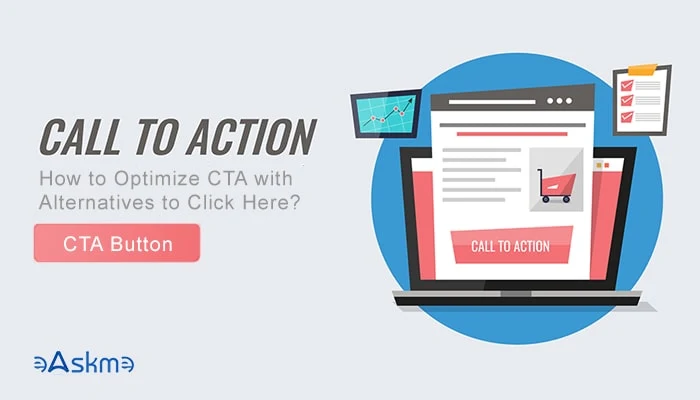Is your call-to-action always coming down to "Click here"? Do you want to optimize your CTA for better search ranking and traffic?
Click here is one of the oldest CTA, which is also sometimes replaced with "Learn more," another boring CTA.
 |
| How to Optimize CTA with Alternatives to Click Here?: eAskme |
Other people are at: 8 Best Tech Accessories Everybody Should Have
If your user is truly looking for the answer, he will surely click the "Learn more" CTA button.
But do you have to use these two only?
Let's find out.
What is more than "Learn More" and "Click Here"?
To get better results from your CTA, you first educate and lure the visitor to the CTA button.
For this, you should first do some basics:
- Set Goals.
- Understand user behavior.
- Build Trust.
- Add clear directions.
Does it seem easy to you?
According to SmartInsights, only 2.8% of web pages convert in the USA.
But have you ever imagined what 97.2% of web pages are lacking?
Let's follow the tips and understand how you can fix this.
Make Next Step Interesting:
Place your CTA button at the very point where your content can make the visitor crave to take the next step.
No one will click a CTA button if it comes before that melting point.
And, to influence your visitor, you need to write lucrative content, title, and description.
If your landing page is not valuable, users will never return to your website again. And you will lose the same opportunity to build trust.
To better understand, follow this example.
Urgent CTA:
A call-to-action link that creates urgency grabs more attention and clicks than other CTAs.
The sense of urgency will make the visitor click the link and find out what else is there.
The most common example of urgent CTA links is a product launch or new product offers.
People love to see what is new.
You can add a link that works, something like this screenshot.
As you see, there are no photos of the products, yet the sale is about to end today.
This creates a sense of urgency, and the visitor will immediately open the link if he is interested in your products.
You can add creative visuals and infographics to educate users about your offering on the landing page.
You should also follow this strategy and add similar CTAs to your content.
Multiple Choice:
The multiple-choice CTA links are the links where users get multiple options to act.
Even if you add Multiple choice CTAs within your content, it will not bring any good results if there is no clarity.
When users see more than one CTAs, they need clarity about each CTA to understand what it is about and where the link will take them.
Optimize the CTA button with color, text, and icon.
The best strategy is to eliminate the "learn more" button.
Rather than using something like "Know more," you should use "See what we do and why."
It narrows down the user's choice and only talks about the particular interest.
Stop using traditional CTAs like "Continue," Read More," "Learn More," Shop Now," Download," "Click here," and "Click here."
Traditional CTA buttons work poorly when it comes to conversion.
Run tests and tell your users what they should expect from the CTA link.
Reduce Risk:
Call-to-action comes with the risk of your user living your content or marketing strategy.
To lower the risk, you should do a few things:
- Clear text and relevant landing page.
- Easy to read and digest.
- Compelling.
- It should display in the best position.
- No other CTAs.
- Easy navigation.
When a visitor leaves a page, he forgets about where he was and started looking at the new page.
It is necessary to have all the influential information on your landing page to make it convertible.
Conclusion:
CTA should be best placed where your visitor is eager to take the next step.
Ignore generic call-to-action buttons such as "learn more" and "Click here."
Use the CTA link only when necessary and place it in the best position.
Your content is your way of influencing the visitor to click the CTA link and visit the next page.
What do you think?
Share via comments.
Share this article with your friends and family.
Don't forget to like us FB and join the eAskme newsletter to stay tuned with us.
Other helpful guides for you;













